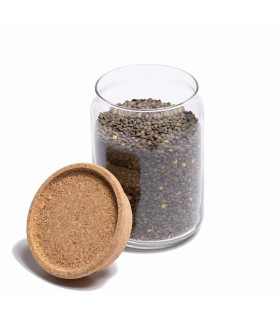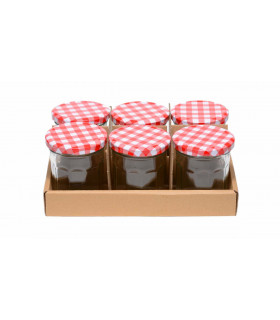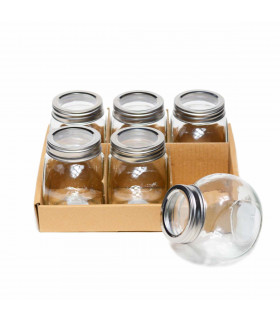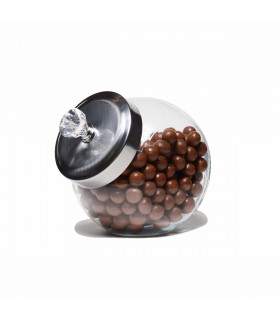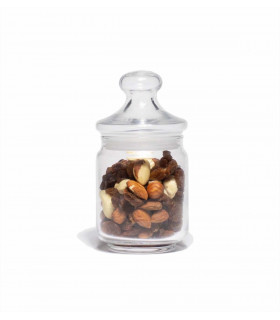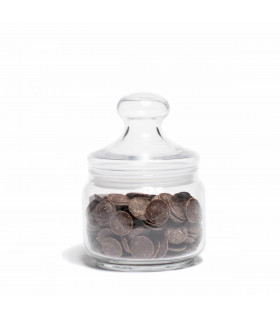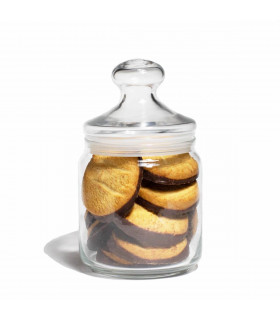glass jars are containers that serve as glass pots for preservation when closed tightly. They are more often used because of their ecological advantages, they are reusable and do not emit any harmful elements. Find out everything you need to know about glass jars here.
What size jars to choose?
The choice of a glass jar depends on the foods that will be stored there. Glass jars come in various common sizes. You can therefore find it in formats ranging from 250 ml to 2 liters. These transparent glass containers allow you to store both dry foods (legumes, cookies, spices) and cooked foods.
The 250ml and 350ml mini glass jars with wooden lids are perfect for storing loose tea and spices. Glass jars with a metal mechanical lid and a rubber seal allow you to store tomato sauce, carrots, cucumbers or even pickles after sterilization.
In addition, the 500 and 750 ml glass jars are suitable for larger cans or legumes. Bulk purchases such as student nut mixes, nuts or cereal flakes are perfectly suited for this.
With a larger capacity, the 1 liter glass jar is practical for containing sugar, chocolate chips or soups. You can also keep household products there, like baking soda or multi-surface mixes!
Your purchases of flour, rice, pasta or salt in large quantities can be stored in large glass jars of 1.5 L or more. Dry foods require jars of various sizes.
To get a concrete idea of their capacity and weight, you can use these equivalents:
- A 1.2L glass jar can hold 1 kg of rice or sugar
- 1 kg of flour or quinoa can easily fit in a 1.3L glass jar
- A 700ml glass jar can hold 500g almonds or more than 250g pistachios.
- A 1 liter candy jar can hold 800 grams of chocolate balls
Which glass jars to choose therefore depend on the size of the food to be stored. So remember to check your bulk consumption in general to take the jars that will correspond to your kitchen and your daily life.
Which glass jars to choose according to food?
There are generally two types of jars: canning glass jars and conventional glass jars. The main difference lies in the way you close the jar.
Glass canning jars are ideal for storing liquid or cooked foods such as terrine, compotes, soups and jams. Sterilization of glass jars before use is essential. Food can therefore be stored there for a long time. Glass is impermeable to oxygen and creates a barrier to bacteria. It blocks the effect of temperature variation on the contents of glass jars. These glass containers allow food to be vacuum-sealed and kept for a long time. The advantage of glass is that it is transparent, so you can easily see its contents.
In addition, solid, non-perishable foods do not require special jars. Vegetables, rice, pasta and legumes can be stored in classic glass jars. These must nevertheless be able to close hermetically. It is not required in these cases to sterilize the jars as long as they are well washed. Equipped with a hermetic closure, the lid is either made from wood or cork stopper. The glass jar with a wooden base lid is stylish and will elegantly decorate your zero waste kitchen. The glass container is therefore useful and is perfect for decorating and dressing a kitchen to give it a touch of naturalness.
How to easily open a glass jar?
Some glass jars can be recalcitrant when opening. In such cases, there are various tips to remedy it.
The tool you don't think about in the first place is the dry cloth. Sometimes you just need to pass it over the cover. Then, with your dominant hand, turn the cloth counterclockwise. It is recommended to do this over the sink to prevent the contents of your jar from spilling.
You will be able to facilitate the opening thanks to the air call. Tap the bottom of the jar dryly with the palm of your hand until you hear a click. This click corresponds to the call for air required to open the jar.
If this trick does not work, wrap the lid of the jar with a rubber band. This will slow down the sliding effect of the cover and make it easier to open with a better grip. This trick also works with a cloth, absorbent washing machine wipe, or rubber glove.
Alternatively, you can fill a vase with hot water and then dip the jar upside down for 30 seconds. If this is not successful on the first attempt, repeat the same process again.
Beyond this trick, you can use a knife blade. Slide the blade of the sturdy knife under the cover to create a draft under the cover for easy removal. Note that this practice is particularly delicate. Avoid resolving yourself if you fear damaging the closure, it may not be airtight afterwards.
You can also punch a hole in the lid with a sharp knife. This action helps to immediately unblock the lid.
How to sterilize glass jars?
Sterilization is a method of preserving food by heat in a tightly closed jar. It destroys living organisms in food by boiling at 100 ° C. Food can be stored for a year if sterilized.
First, immerse the glass jars in a casserole dish and make sure that the jars do not touch the metal of the container. Then count from 10 minutes after boiling. Then lay out a clean tea towel and dry the glass jars turned upside down.
Then move on to food preparation. Foods that can be sterilized are fruits, fresh vegetables, and homemade meat dishes. It is not recommended to use frozen and thawed products or ingredients. You must blanch your vegetables, carefully wash meats and fish with running water. The quality of your can will depend on the quality of the food you cook.
Now pour the hot food into the glass jars while leaving a margin of 2 cm with the rims. Wait a few minutes for the food to fill and take the right place in the jar. All air pockets must be filled. Then close the glass jar tightly to place them in a pot. Make sure that there is at least an inch of water above the pots in the pot.
When the contents is boiling, lower the heat so that the glass jars can sterilize for as long as it takes. The sterilization time varies depending on the capacity of the glass jars and their contents. It usually takes 15 minutes for 250ml jars and 20 minutes for 500ml jars. For jars of raw food, uncooked before sterilization, you will need to wait 3 hours. For jars of cooked food (purees, ready meals ...), sterilization will take 1 hour.
After the sterilization time has elapsed, turn off the heat and allow the glass jars to cool slowly in the pot. After 24 hours, the jars and water will have cooled; you can therefore take them out and put them away. When opening the glass jars, a slight noise will assure you of their successful sterilization. Then write the date of preparation and the name of the contents on the glass jars. Then keep them in a cool, dry place out of direct light.
How to hermetically seal glass jars?
Capping is one of the most important steps. In fact, it should be done so that the glass jars resist overpressure and depression. The hermetic closure of a jar creates an opposition between 2 practices: hot closing and cold closing.
Hot closing is the best known method. It consists of filling your jar, closing it with the screw cap. You will then have to turn the pot over and let it cool. This action has the advantage of sterilizing the empty space in the glass jar. We strongly recommend that you use new lids. Otherwise, you can use lids, the inside of which is gently wiped with a cloth impregnated with 90 ° alcohol. After you open the jar, use cellophane or porous paper afterwards to prevent mold growth.
Moreover, cold closing does not require screwing the lid on, even though this is the best method of preservation. First, make sure the contents of your glass jars are completely cold. Let cool a block of melted paraffin in a water bath. Once it is hard, the paraffin will strengthen the waterproof appearance of your glass jars. A glass jar with wooden lid can also be hermetically sealed with the silicone on the cap. No need to boil or have sterilized food to seal this jar. Your food should be secret without water. The spice jar, for example, does not require a special closure, just that it does not fit in to prevent the food from sticking.
Choosing the best way to seal your glass jars will depend on your needs and expectations. Indeed, it will depend on the expected storage time and where you store them.
What should be remembered from all of the above is that glass jars promote optimal food preservation while respecting ecological measures. They represent a good long-term investment provided you take good care of them. Decorated jars are a great way to enhance your interior.

